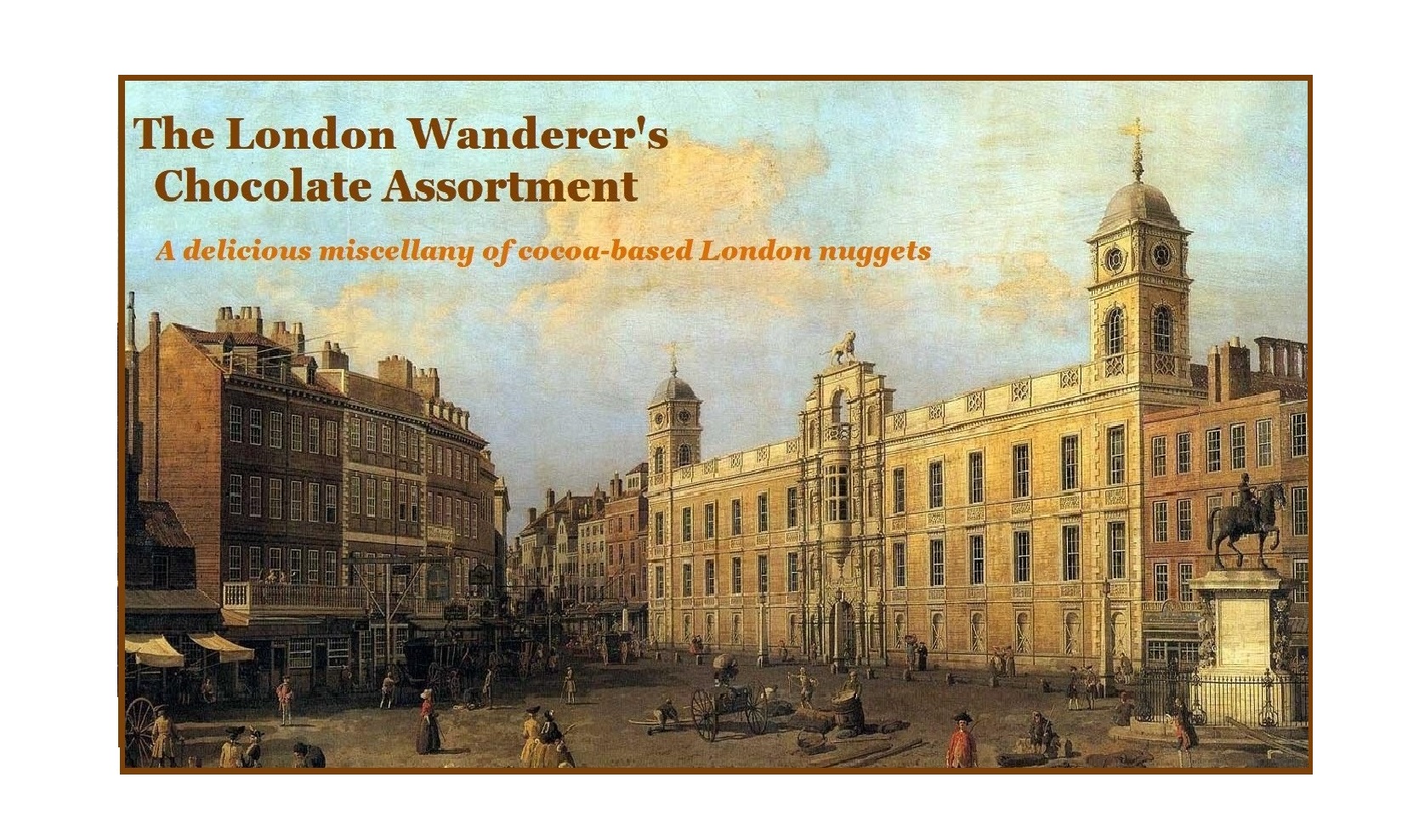
I thought a few meandering London-related observations on chocolate might make for an enjoyable change, after a rather dry series of posts on buildings and institutions. Much to my surprise, this has ended up featuring quite a lot of French people and gambling. Oh, and some whale vomit and a weasel that goes ‘pop’. You’re welcome.
For centuries the City of London was famous for its many coffee houses, but there were also a handful of chocolate houses, where customers enjoyed cups of the hot cocoa-based beverage made with spices, water and sugar. Chocolate was introduced into England in 1652, just as the first coffee houses were opening. In 1657, in the ‘Publick Advertiser’, it was stated that ‘In Bishopsgate Street, in Queen’s Head Alley, at a Frenchman’s House is an excellent West India drink called chocolate, to be sold, where you may have it at any time, and also unmade at reasonable rates’. While I’m not sure if said Frenchman would truly welcome someone calling for chocolate at say, 3am, this is certainly the first London chocolate house of which historians are aware.
→ Bus stop Q (circled), Wormwood Street, off Bishopsgate in the City. The entrance to Queen’s Head Alley once stood roughly where the bus shelter is now. Sadly, there’s not a hint of chocolate in this dreary streetscape to reflect its past. No commemorative plaque. Nowt. Not even a kiosk selling Mars Bars.
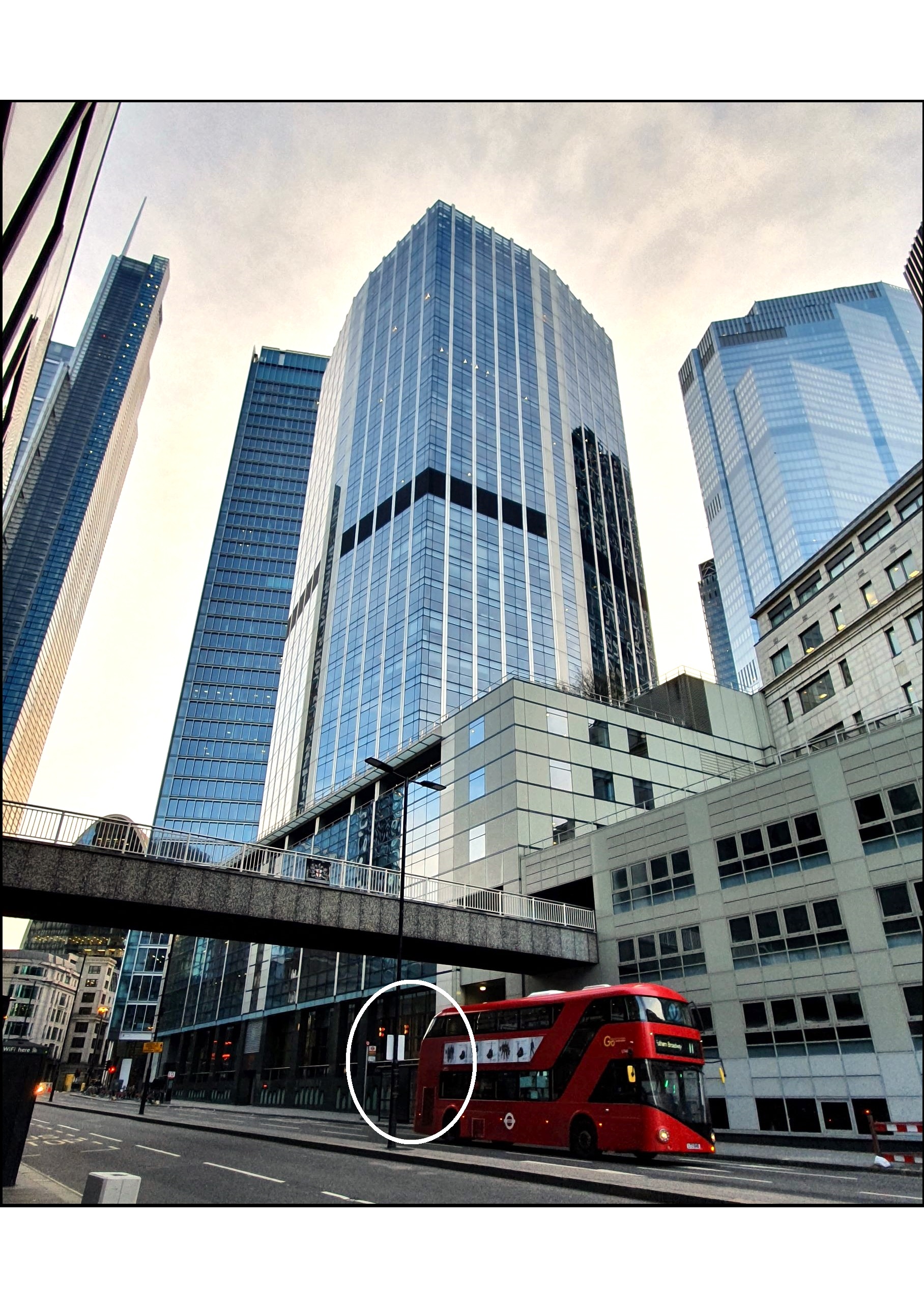
By 1661 Samuel Pepys had caught the cocoa habit, reporting in his diary on April 24th that he had taken his morning draft ‘in chocolate’ to settle his stomach after the rigours of celebrating King Charles II’s English* coronation the day before. It was clearly a habit that stayed with him. In 1664 he expressed a preference for taking his morning chocolate at a Mr. Bland’s coffee house. In 1701, after reports of his ill-health, a Captain Hatton wrote to him expressing joy at his recovery, enclosing ‘a few cakes of chocolate’ in celebration – cakes were flat pieces used in the preparation of drinking chocolate. Now, as you may be wondering what went into such cakes, here’s the ingredients Hannah Glasse lists in her 1747 book The Art of Cookery Made Plain and Easy:
I don’t anticipate a stampede to Waitrose for this set of ingredients. Besides, no-one has legally stocked ambergris (fragrant whale vomit) since 1970, so not even Nigella has that in her kitchen cabinet.
Coffee houses were widespread and frequented by a fair proportion of the male population of London, but chocolate was expensive, so the chocolate houses were for the elite. They eventually centered around exclusive St James’s and also became known for gambling. White’s, a very exclusive gentleman’s club at 37 St. James’s Street, began life as a chocolate house in 1693. It soon became an infamous gambling den and this was illustrated, in all its decadent glory, in Hogarth’s Rake’s Progress in 1735.
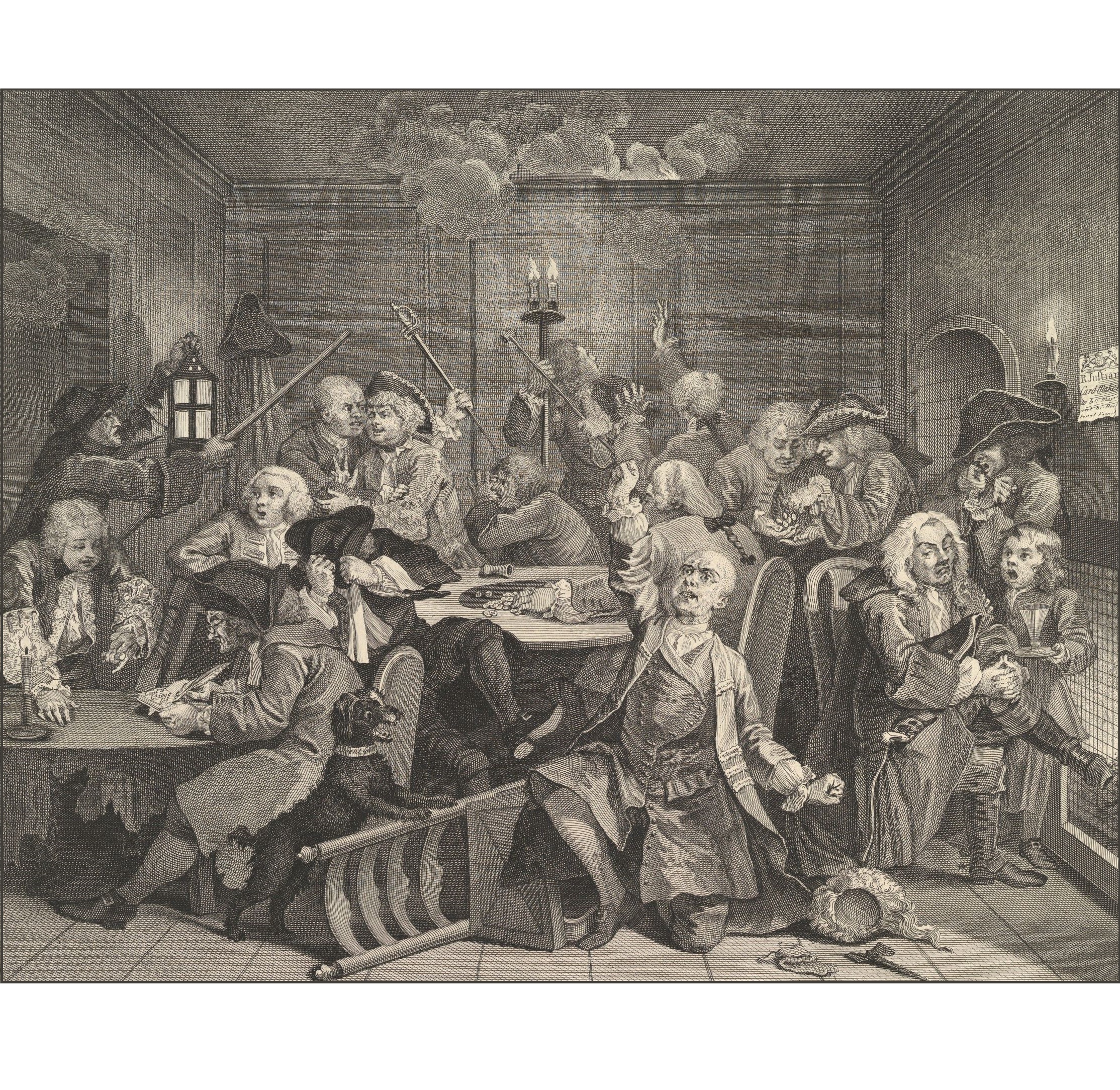
← The Rake’s Progress, plate 6. The wigless rake, arm raised in despair, is in the foreground. This is the inner room of White’s , known as ‘hell’. The fire shown at the back references a real conflagration in ‘hell’ which destroyed the entire premises in 1733. It was quickly rebuilt.
→ White’s, the most exclusive club in London, as it is today. Membership is limited to 500. The building is listed Grade I – and all this was built on chocolate.
In the bow window in 1816, Lord Alvanley bet a friend £3,000 which of two raindrops would reach the bottom of a pane of glass first.
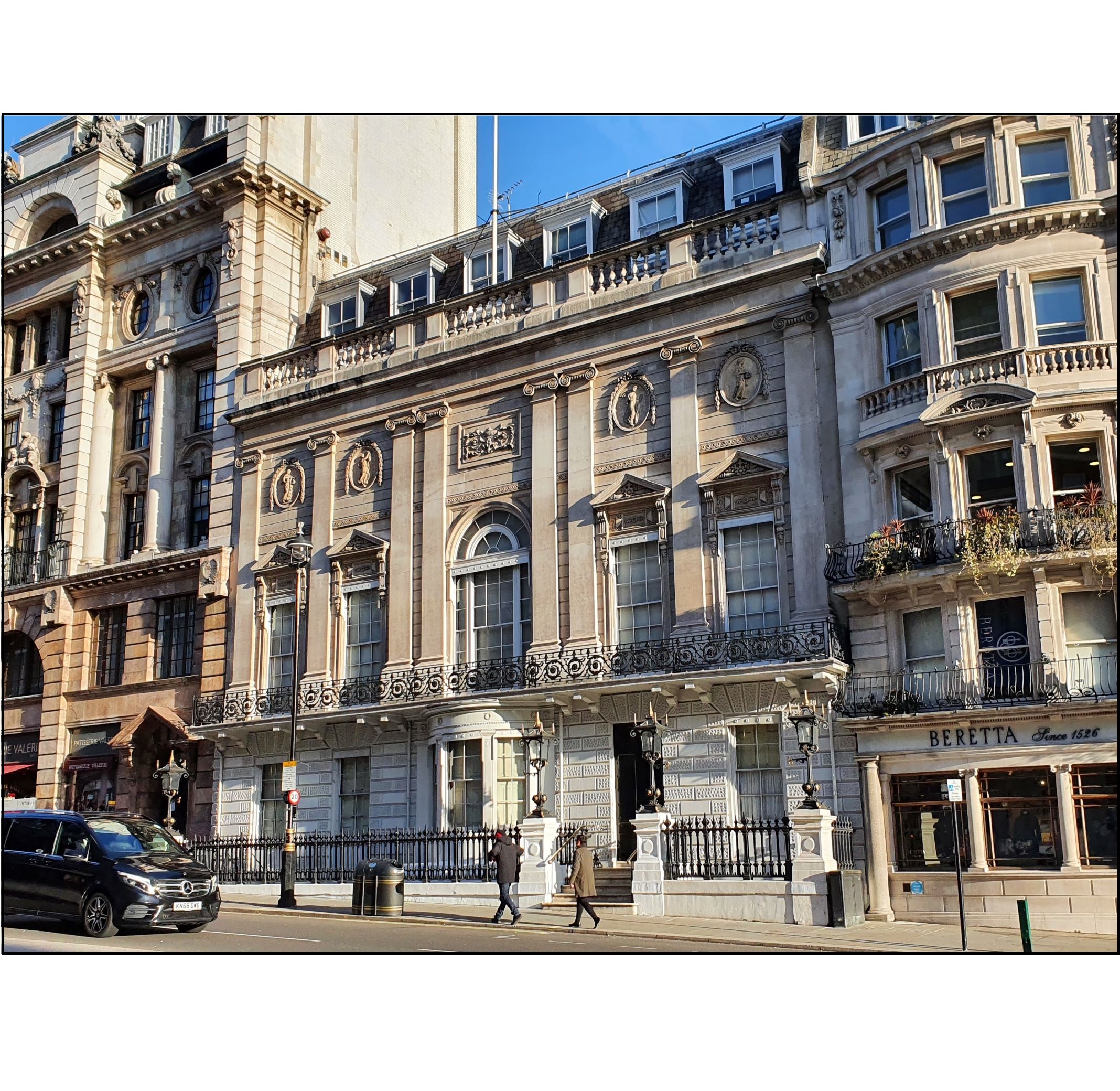
Further down St James’s Street, Ozinda’s Chocolate House (1694-c.1748) was yards from St James’s Palace, the official seat of the monarch, and had a renowned art collection on its walls. Perhaps unsurprisingly in these circumstances, it was a Tory rendezvous. William Byrd of Virginia states in his diary that drinking chocolate, betting and reading newspapers were the main attractions. Jonathon Swift attended a meeting of a dining club there in March 1712; his account makes clear the advantage of Ozinda’s location – ‘dinner was dressed [prepared] in the Queen’s kitchen and was mighty fine … We were never merrier, nor better company, and did not part till after eleven.’ The building was demolished in 1748.
Close by on Pall Mall was the Cocoa Tree Chocolate House (1698-1932). This was the great Tory chocolate house in the reign of Queen Anne, a Tory administration apparently spending £25,000 in bribes here in a single morning. It later became a hotbed of Jacobite sympathy, and converted in 1746 to a private club. In 1757 it moved across the road, where five years later Edward Gibbon considered it a ‘sight truly English’, but then he was already writing his masterwork on The Decline and Fall of the Roman Empire; anything would seem English after that. Gambling reached epic proportions here as well, with Horace Walpole writing to a friend in 1780 that £180,000 (£35m today) had been wagered in a single week. Following periods of closure, it was revived for a final time in 1877 at 64 St James’s Street, close to White’s. This had a mock cocoa tree in the centre that went up through two floors of the clubhouse. It was badly damaged by fire in 1926, but ‘Lounger’ in the Sporting Times was still waxing eloquent about the club in 1929. It closed in 1932 on expiration of its lease.
As chocolate was an elite beverage with much associated paraphernalia, some of the super-elite went a step further and created their own chocolate kitchens as a status symbol. Royalty can afford the best and William III – who was a bit of a chocoholic, drinking it throughout the day – commissioned Sir Christopher Wren to include one in the redevelopment at Hampton Court Palace, c.1690. It is the only survivor of this rare breed. Apparently, it was rediscovered in 2013 – though how any kitchen designed by Wren can be mislaid for centuries is anyone’s guess. It is now open to the public.
Supposedly, Sir Hans Sloane brought back the idea of milk-based chocolate drinks from Jamaica in 1687, after seeing locals adding cow juice to the established chocolate, spice, sugar and water combo. Thus, chocolate began the slippery slope towards the insipid milky nothingness we call drinking chocolate today. Much as I could admire a man for creating a collection so vast it formed the basis of the British Museum, the British Library and the Natural History Museum, in no way does that mitigate the damage he might have inflicted on chocolate beverages. However, the story is disputed – for example Henry Stubbe, in his book The Indian Nectar, or A Discourse Concerning Chocolate published 25 years earlier mentions mixing chocolate with milk ‘as it is sold in the chocolate houses’. I should also point out that Sloane’s attitude to slavery is considerably more difficult to swallow than his cocoa recipe, so perhaps I should move on.
There was a story told years after the event by ‘old Mr Matthews, the bookseller of the Strand’, that Napoleon Bonaparte stayed in London for 5 weeks 1791-2 and ‘occasionally took his cup of chocolate at the Northumberland Coffee-house, opposite Northumberland House’. It is, I confess, difficult to picture the future Emperor of the French and conqueror of Europe sipping a morning chocolate in a humble coffee house opposite the palatial London home of the Dukes of Northumberland. Old Mr Matthews sounds a little like Abe Simpson, father of Homer, and his rambling, impossible tales. More reliable sources suggest it was at least a favourite haunt of Richard Brinsley Sheridan.
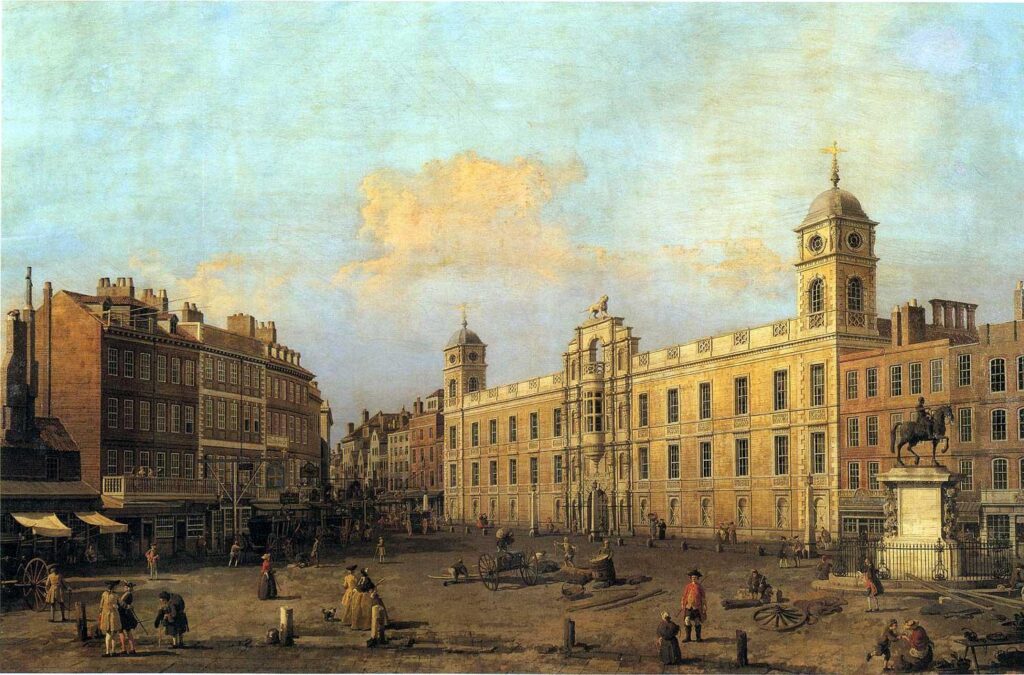
← Northumberland House, painted by Canaletto in 1752, demolished in 1874 to make way for Northumberland Avenue. The coffee house was centre left, opposite the main entrance to Northumberland House. The site of the rear of the premises is where the statue of Henry Havelock now stands, in the south-east of Trafalgar Square.
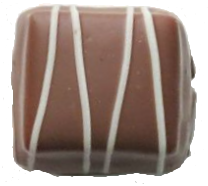
Act 1 of William Congreve’s play The Way of the World (1700) is set in a chocolate house, establishing the social standing of the characters, and scene VII features a coachman demanding of an attendant some dishes of chocolate for ladies in his coach outside. This illustrates all too well that these establishments were a men-only world, and also – conveniently for me – links chocolate and theatre. Modern theatre is particularly attached to it: I was once attending a group tour of a grand West End playhouse, and the guide (the theatre manager) was a few minutes late. He apologised, explaining that a delivery of Maltesers had arrived and – as any theatre accountant will tell you – nothing should get in the way of a Malteser delivery, as they are by far the most popular chocolates among audiences.
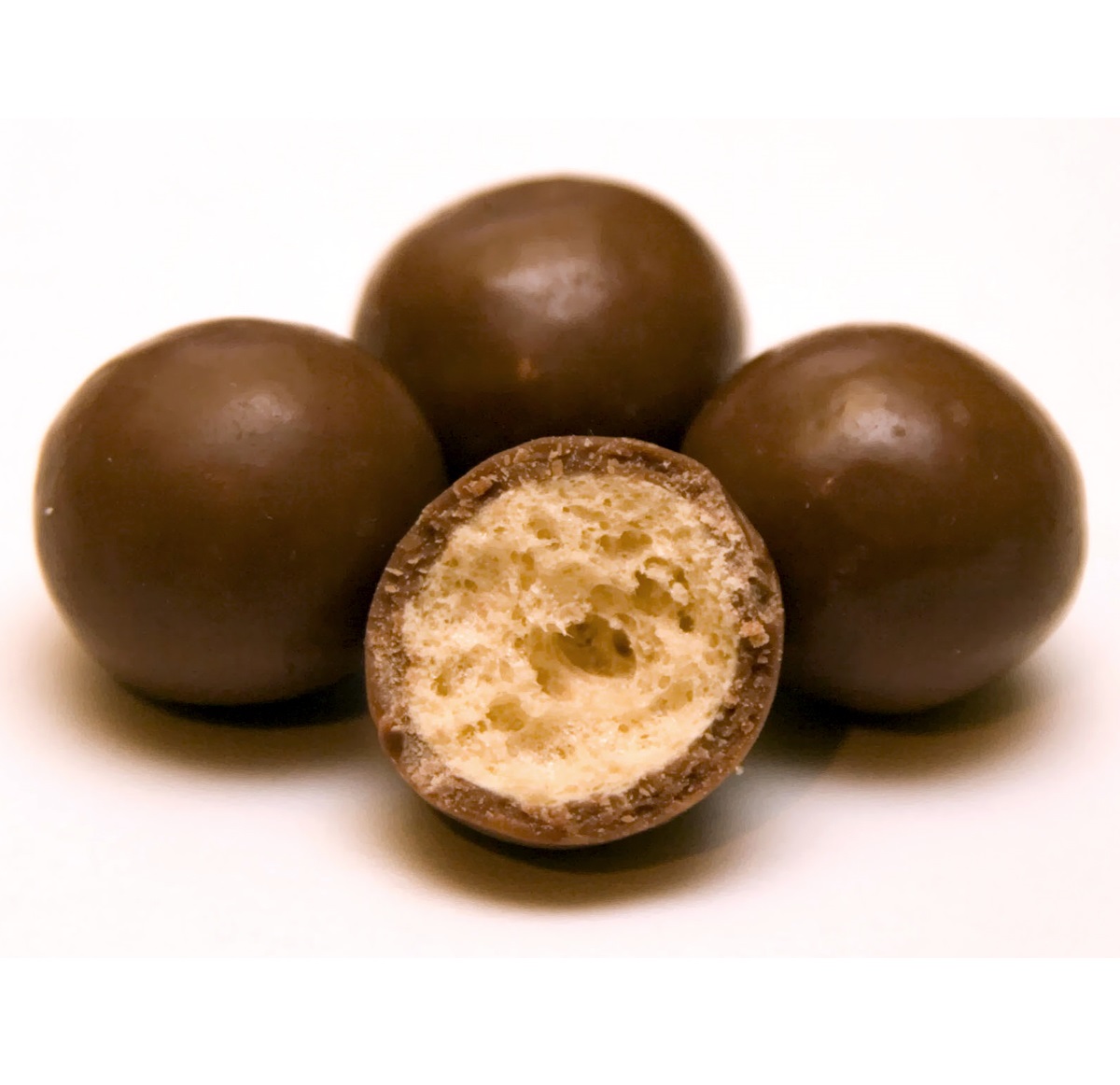
← A crispy, malty, chocolate-coated goldmine. Never position yourself between theatre managers and their Malteser deliveries.
Staying with the theatre theme, the Menier Chocolate Factory in Southwark is, unsurprisingly, the former London chocolate factory of the Menier company of France. Opened in 1874, it closed during WW2, became an engineering works and by the 1980s was derelict. It was refurbished in the 1990s and the building opened as a successful producing theatre in 2004 with a restaurant attached. It is listed Grade II; the tripartite windows at the corners, with quadripartite windows on the 4th floor, are – apparently – particularly noteworthy. Menier was once owned by Rowntree Mackintosh and is now part of Nestlé, but you can still buy Menier-branded cooking chocolate in supermarkets.
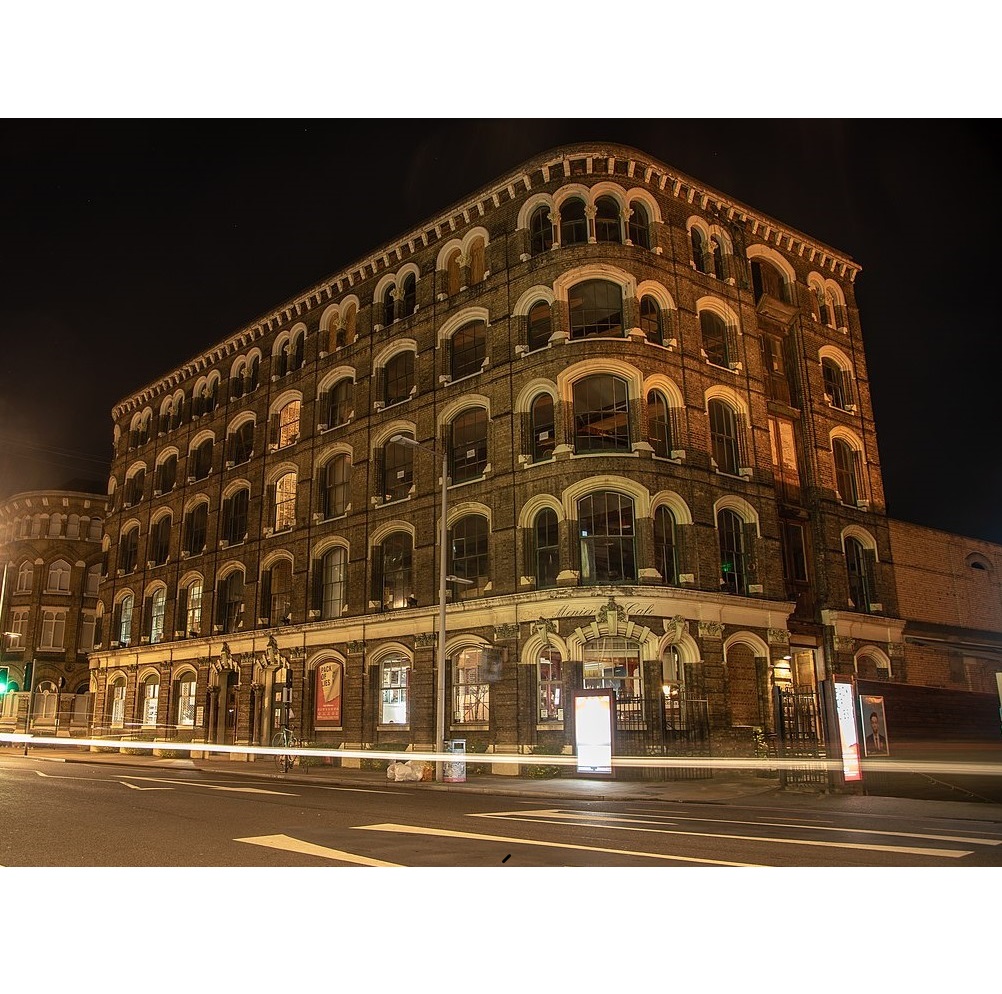
← The former Menier Chocolate Factory (a chocolate factory) in Southwark, now the Menier Chocolate Factory (a theatre and restaurant). The restaurant menu features a ‘Menier chocolate platter’ for dessert.
→ London can consider itself short-changed. Pleasant though the Southwark building is, this – part of the stunning former Menier chocolate factory outside Paris – knocks seven bells out of it. A 1997 issue of the Architectural Review called the 1872 iron and brick building at Noisiel ‘one of the iconic buildings of the Industrial Revolution’.
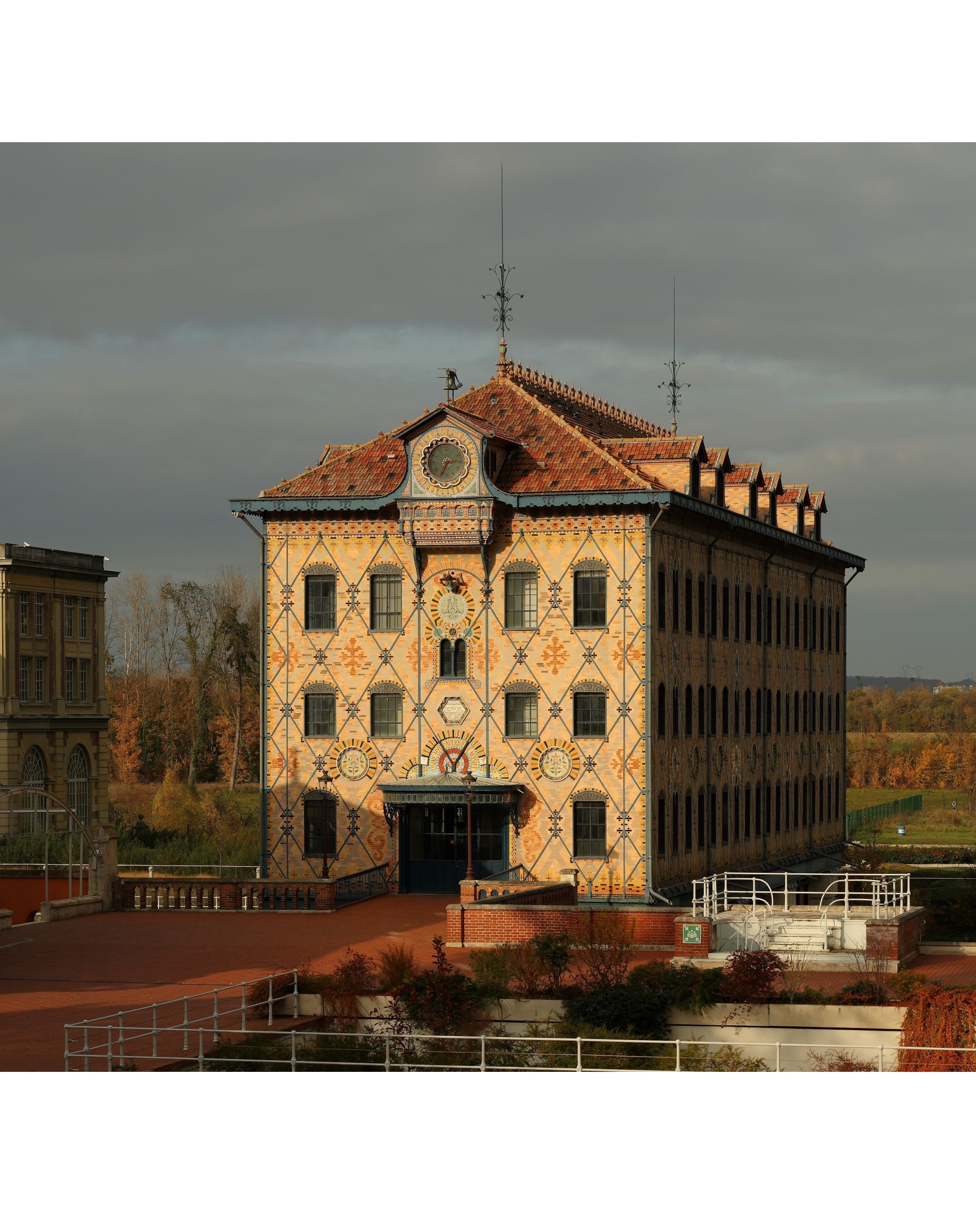

Noël Coward’s preference for a selection of Charbonnel et Walker‘s violet creams and rose creams – known as his ‘special mixture’ – conveniently takes us from theatre to surviving chocolate shops of the belle époque. Charbonnel’s is one of those rare Victorian establishments founded (in 1875) by women – Mme Virginie Eugenie Lévy, née Charbonnel, and Mrs Minnie Walker. The company was heading for liquidation in 1894 after the demise of both founders but survived the experience, at which point the rather twee affectation ‘et’ first appeared in the company’s name. It has a royal warrant – as chocolate manufacturers to HM the Queen – and is situated on the corner of the gloriously tasteless – and listed Grade II – 1879 Royal Arcade on exclusive Old Bond Street.
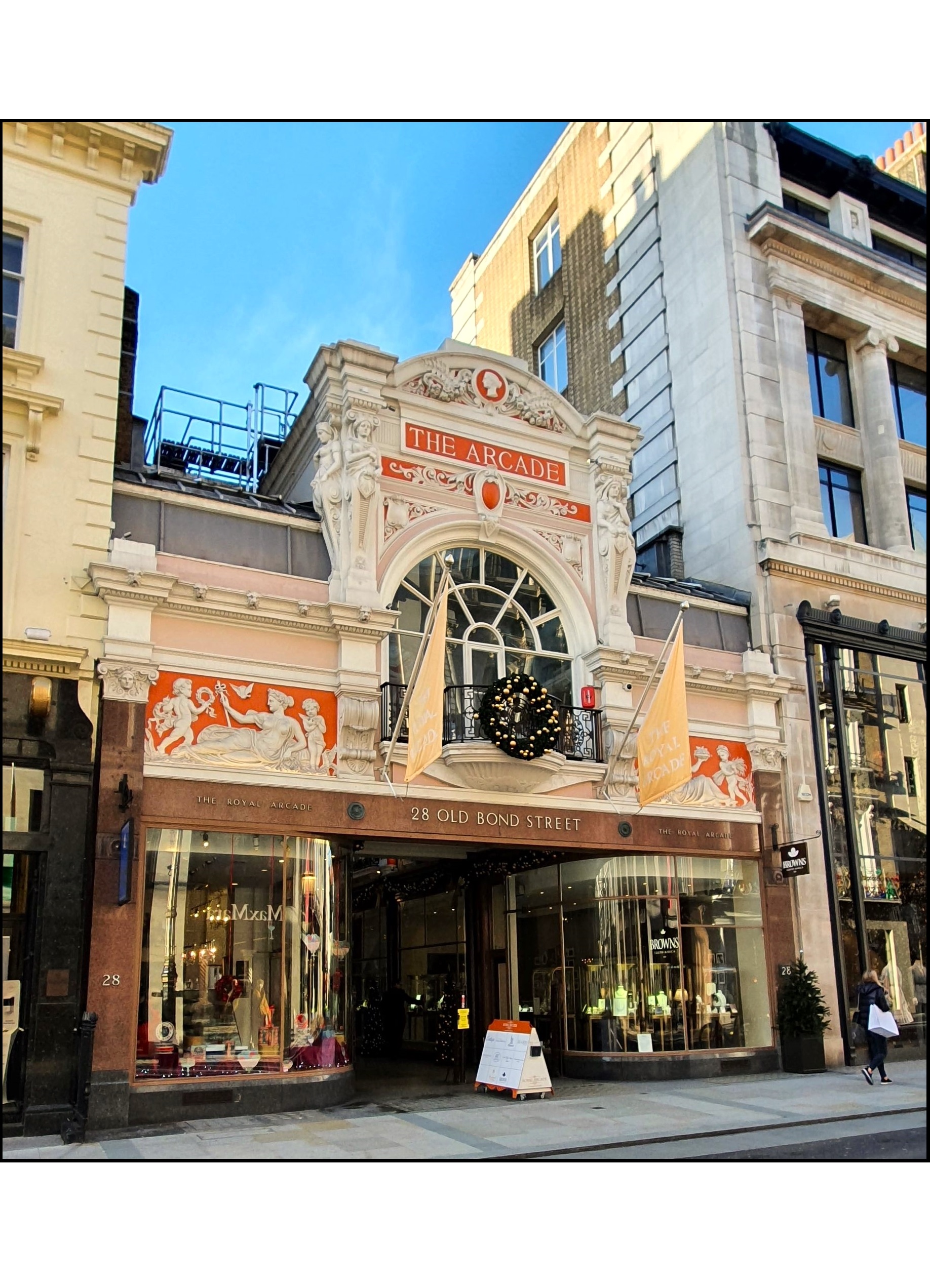
← Charbonnel’s is the left-hand premises in the arcade entrance.
→ A close-up of the shop window within the arcade
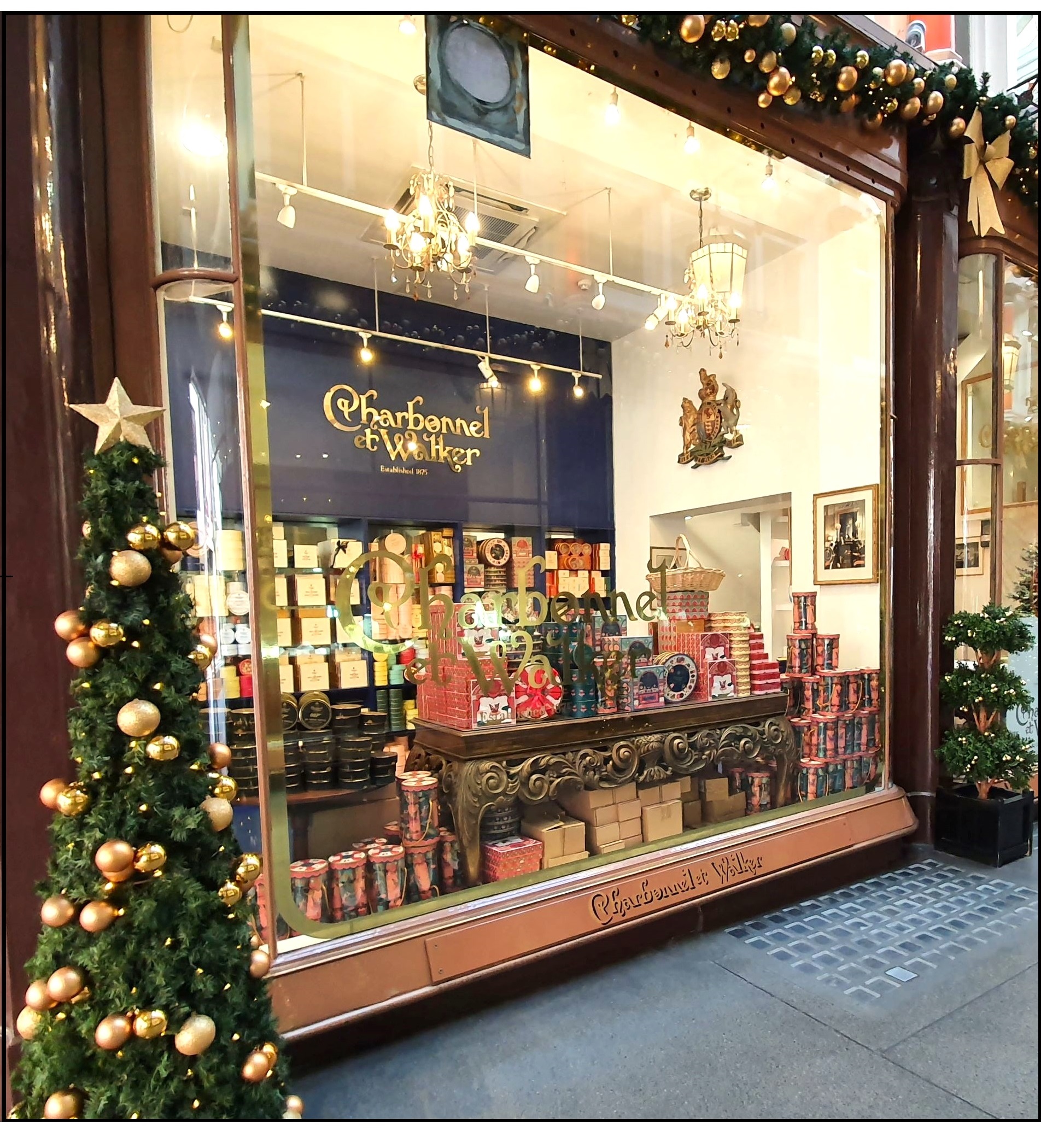
There are similarities between Charbonnel and Prestat, another chocolatier opened by a French person – this time Antoine Dufour in 1902. It also has a royal warrant – as purveyors of chocolate to HM the Queen – strongly suggesting that someone across Green Park in Buckingham Palace has a serious chocolate addiction. Furthermore, it too is located in an historic arcade, Prince’s – which runs between Piccadilly and Jermyn Street. Prestat is a personal favourite of mine, although those of a nervous disposition should perhaps steer clear of the truffles: In Roald Dahl’s novel My Uncle Oswald a sultry temptress seduces people in high places with a love-potion secreted in those particular confections. Of course, if you’re looking specifically to be seduced by a sultry temptress, go right ahead.
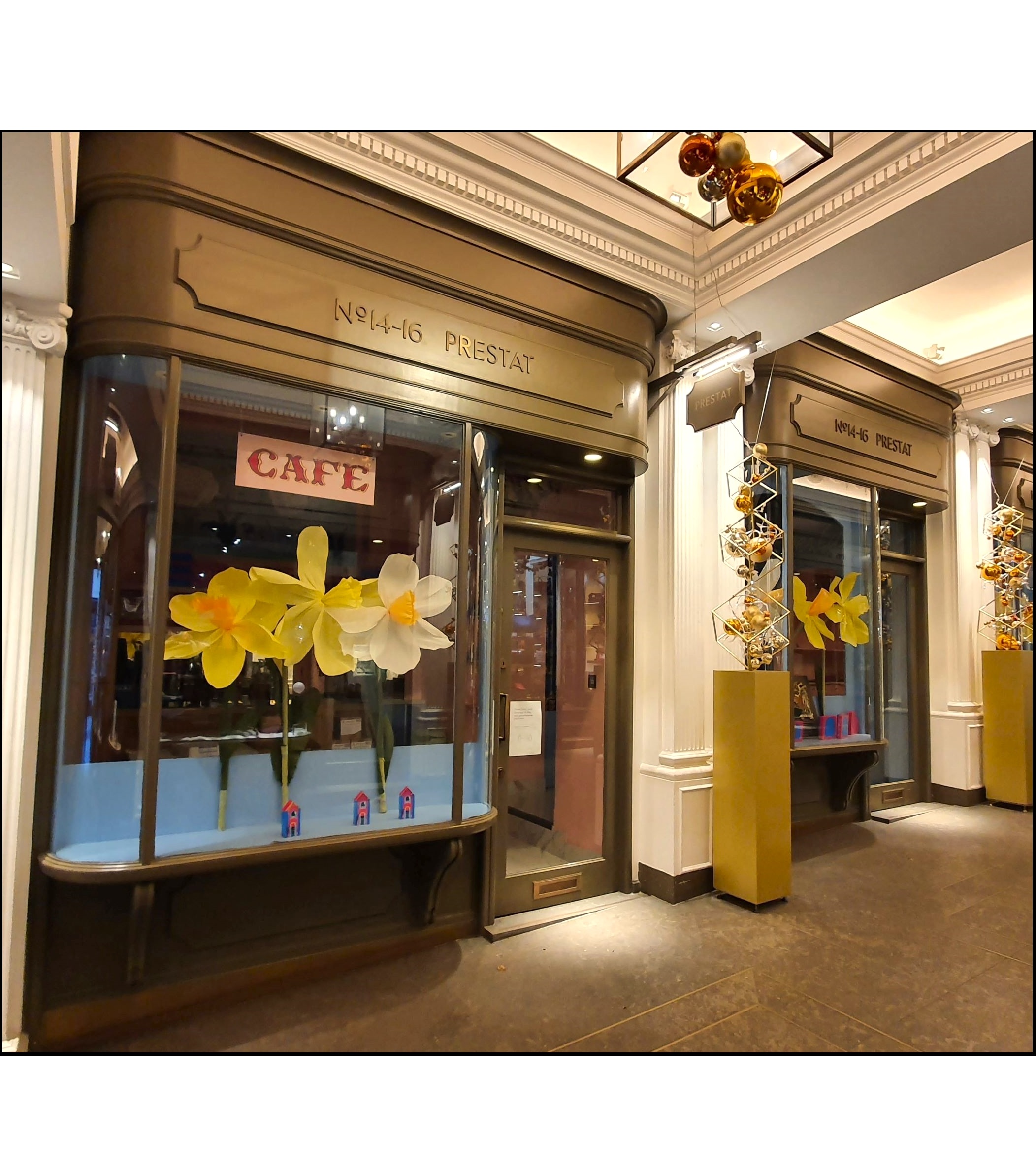
← The Prince’s Arcade. A photograph taken in early December 2020, revealing that Prestat is taking the long view on Covid.
In truth, Prince’s Arcade is rather less historic than its near neighbours, the Royal, Burlington , Piccadilly and Royal Opera arcades, as it was only opened in 1933, inserted into the 1883 Prince’s House. The arcade, along with the rest of the building, is listed Grade II.
Time for some more personal reminiscences. Thornton’s was founded in 1911 in Sheffield, which I believe is somewhere ‘up North’. No matter, it has shops in London. I remember a conveniently placed Thornton’s shop at the corner of Moorgate and London Wall (itself early 18th century and listed Grade II, a remarkable survivor of the Blitz given its location) when I started working in the area in 1990. Their sales of Viennese Truffles must have doubled as a result; this was my introduction to that star of the Thornton’s range. Alas, the shop is now a Vodafone outlet. More recently there was a large Thornton’s on Regent Street, complete with an upstairs chocolate-themed café. That didn’t last long either, despite my best efforts.
As well as historical connections and venerable chocolate houses like Prestat and Charbonnel, and branches of high-end national chains like Hotel Chocolat, London is awash with excellent – but frequently excruciatingly expensive – artisan chocolate makers. Most of these seem to focus on the weirdest possible taste combinations. I’m impressed by Paul A. Young’s ability to create a suitably festive Gold, Frankincense and Myrrh bar, which really does contain all three of those ingredients. I’m not convinced, however, that it would be particularly tasty.

The reach of chocolate in London goes far beyond the chocolate houses, theatres and chocolate retailers. For example, Hotel Chocolat runs a restaurant at the edge of trendy Borough Market, based on the successful eatery it runs on its plantation in St Lucia. I’ve never been, but perusing its website, Rabot 1745 has a perfectly sensible and appetising menu which somehow manages to include aspects of the cocoa plant in almost every dish – even the chips come with ‘cacao ketchup’. I feel I should take a ‘brave pill’ (chocolate-coated, of course) and sample some of these dishes, then report back. I’ll put it on my ‘to-do’ list.
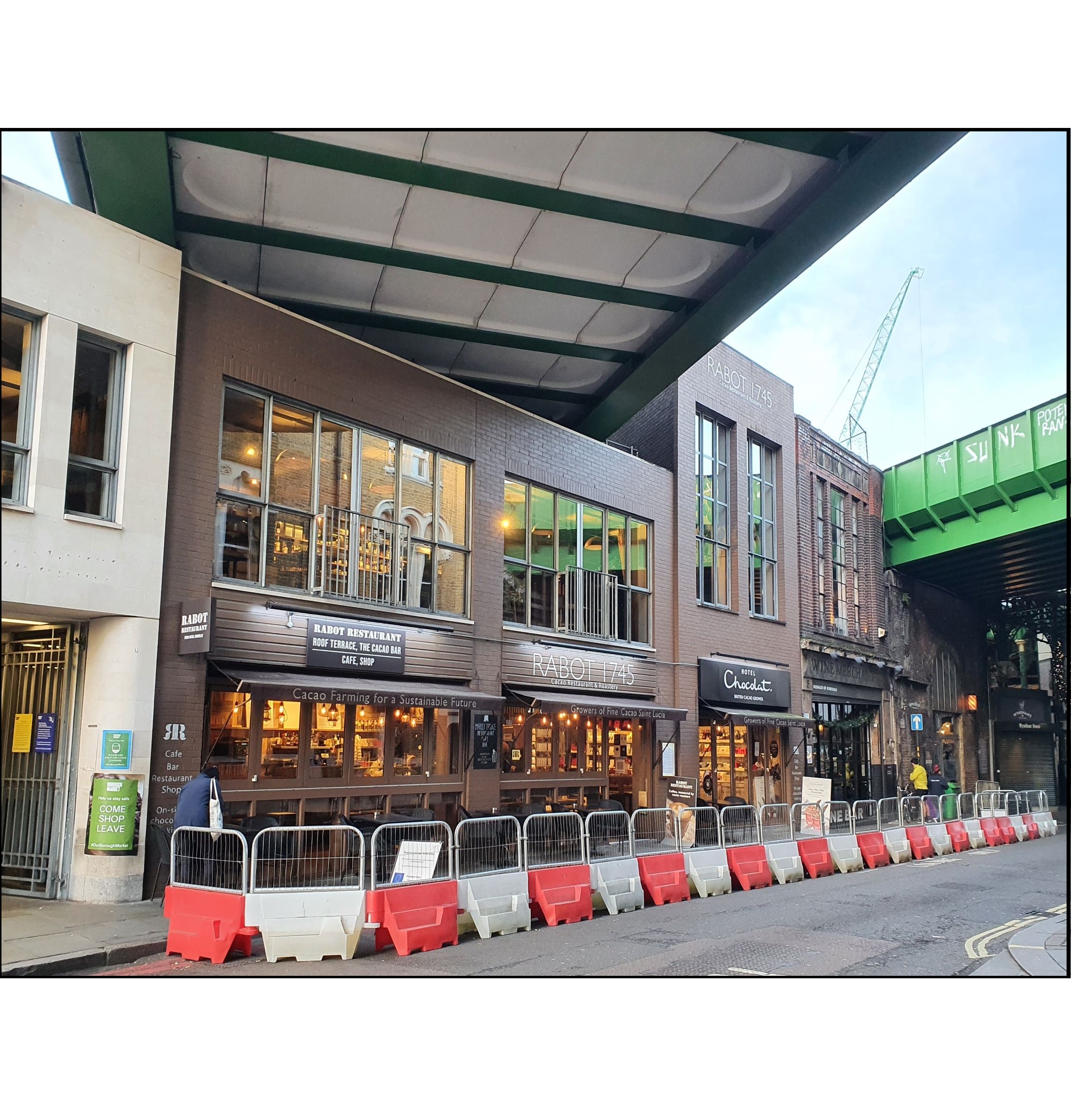
← Rabot 1745 – ideal for those who can’t wait until dessert for cocoa-based calorific intake, but I’m concerned that those who opt for a table on the advertised roof terrace might be sharing their repast with commuter trains.
London also has a Chocolate Museum in Brixton. This was created by – you guessed it – a French chocolatier, Isabelle Alaya, and opened in 2013. It has permanent exhibitions on all things chocolaty, chocolate workshops, chocolate demonstrations, some very weirdly flavoured chocolate, and a café which features – quelle surprise – quite a lot of chocolate.
→ The Chocolate Museum, nearest the camera. Perhaps a bit reticent on the outside, but no doubt chocolate heaven on the inside.
They also offer drop-in chocolate truffle-making classes.
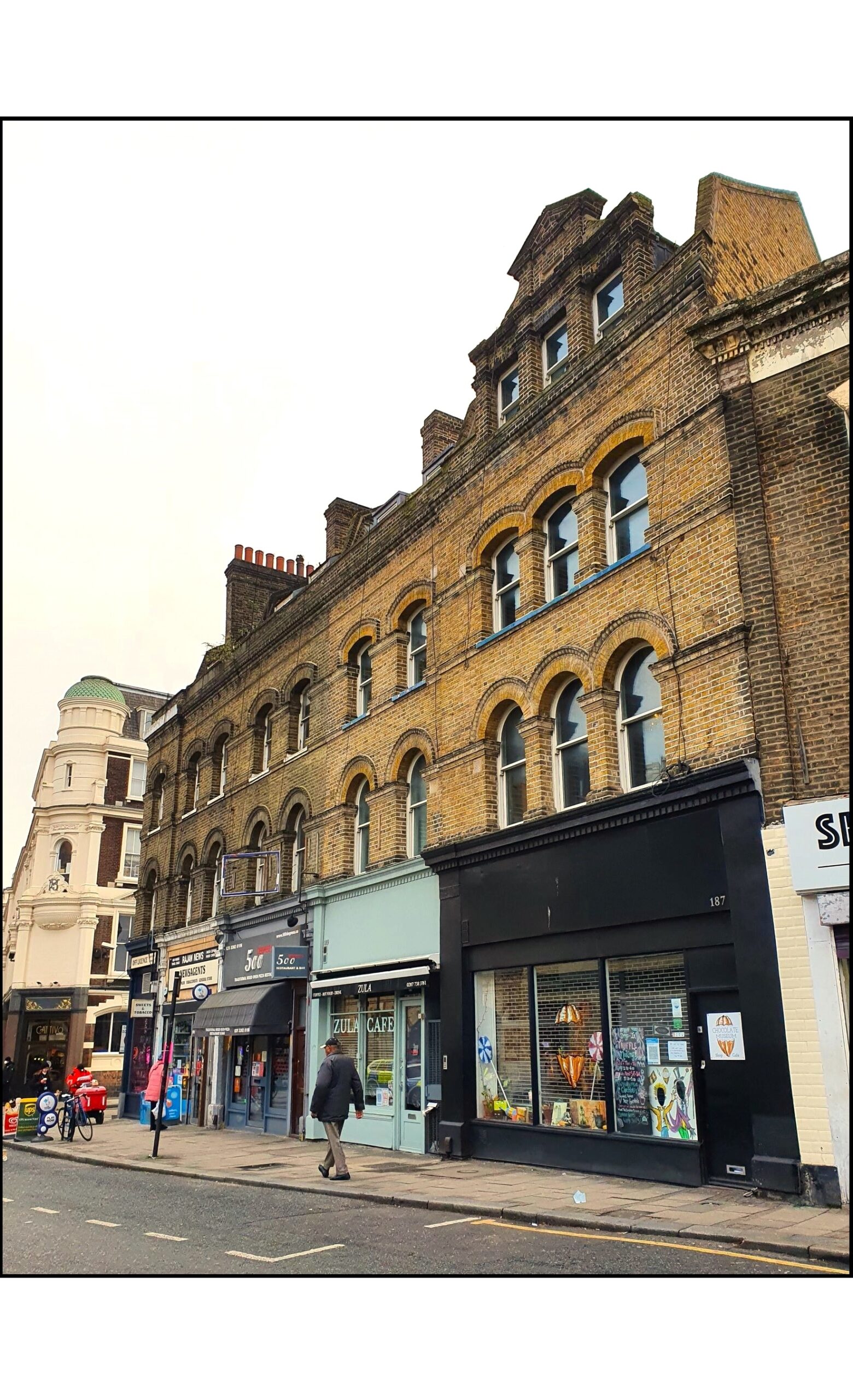
Finally, if all this talk of chocolate has inspired you to find a home in London with chocolate connections, there are a couple of possibilities:
Bankside Lofts are built in the shell of the James Epps & Co. steam-powered cocoa mill near the Tate Modern. The company was responsible for the first mass-market instant chocolate drink. The mill opened in 1878, but Epps was bought by Rowntree in 1926 and the factory closed in 1930.
→ The Lofts aren’t listed but the house to the right, built in 1702, is.
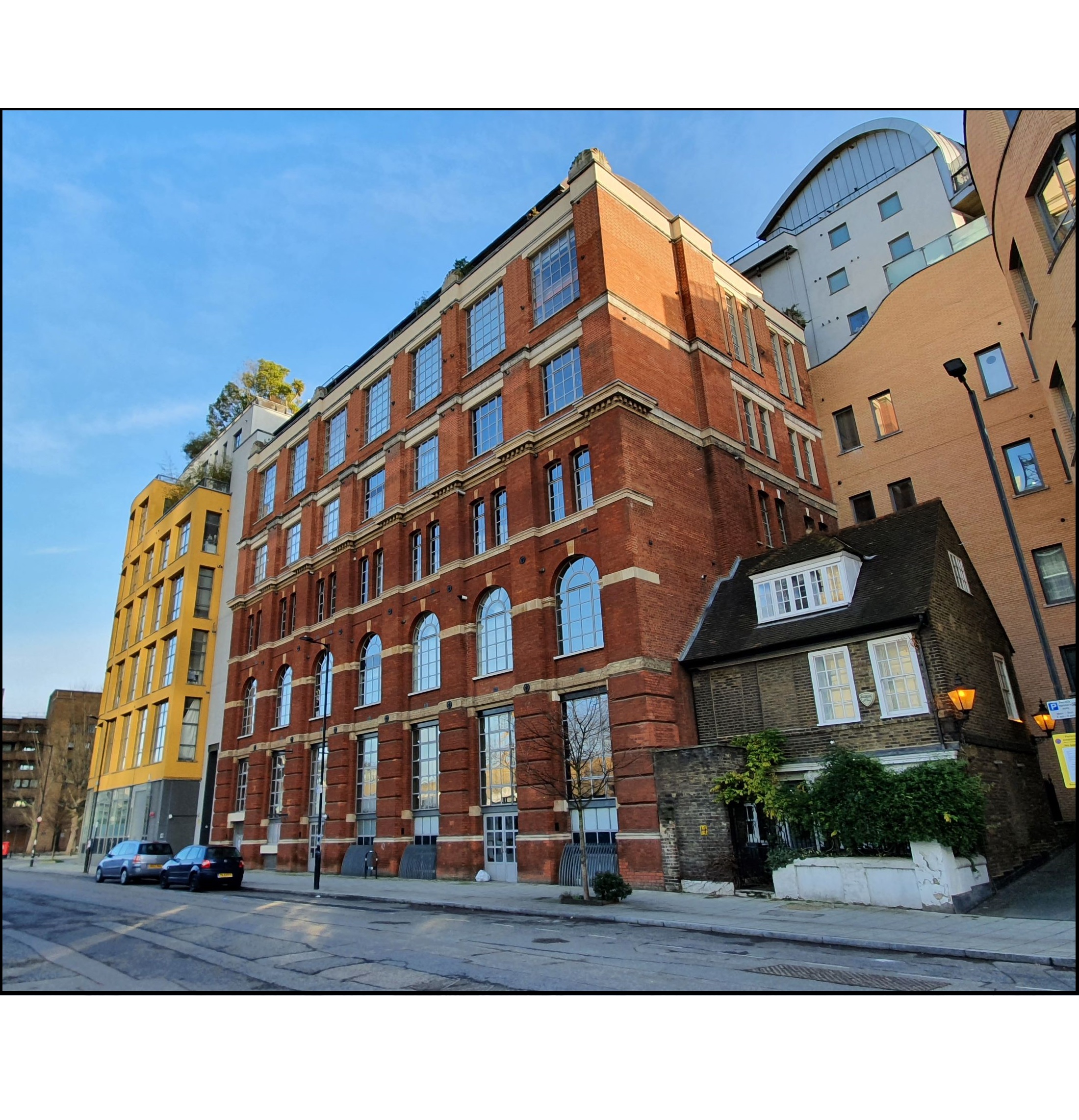
If the South Bank is not for you, perhaps City Road would suit. Chocolate Studios occupies the Victorian chocolate factory of sweet maker Barrett’s on Shepherdess Walk.

← The Chocolate Studios (far right of the picture) are less photogenic than their near-neighbour, the Eagle pub, famed for having people go in and out shortly before a weasel goes ‘pop’ – probably a reference to drunkenness leading to the use of a pawn shop. The verse is shown on the Eagle’s wall.

I hope you’ve enjoyed this random wander through London chocolate connections. As it contains references to several extant businesses, I should reiterate that I do not receive any payment or benefit for such references, which reflect only my personal opinion and experience. There are many quality chocolate-related establishments out there – I urge you to go forth and explore. And if anyone tries the Gold, Frankincense and Myrrh bar, do get in touch and describe the experience.
Footnotes:
*Charles II was crowned in Scotland on 1st January 1651. England and Scotland remained separate kingdoms at this time.
Nearest Stations:
Credits:
Selected Bibliography: